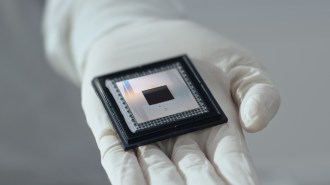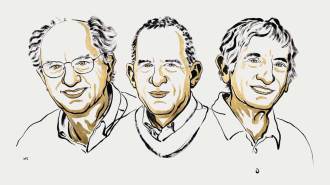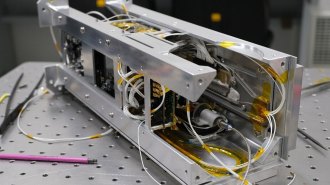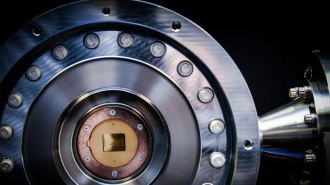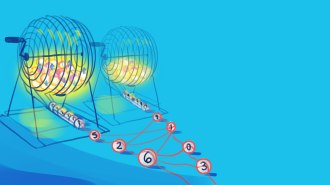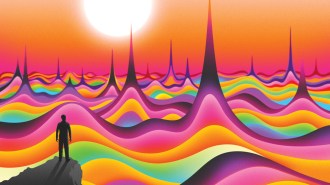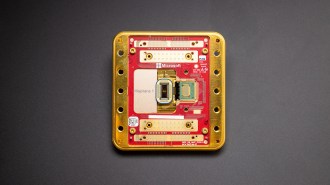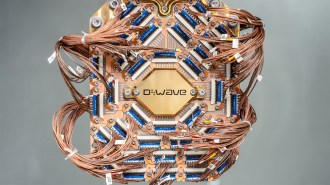The unsung women of quantum physics get their due
A new book celebrates the women in a field once called Knabenphysik, or “boys’ physics”
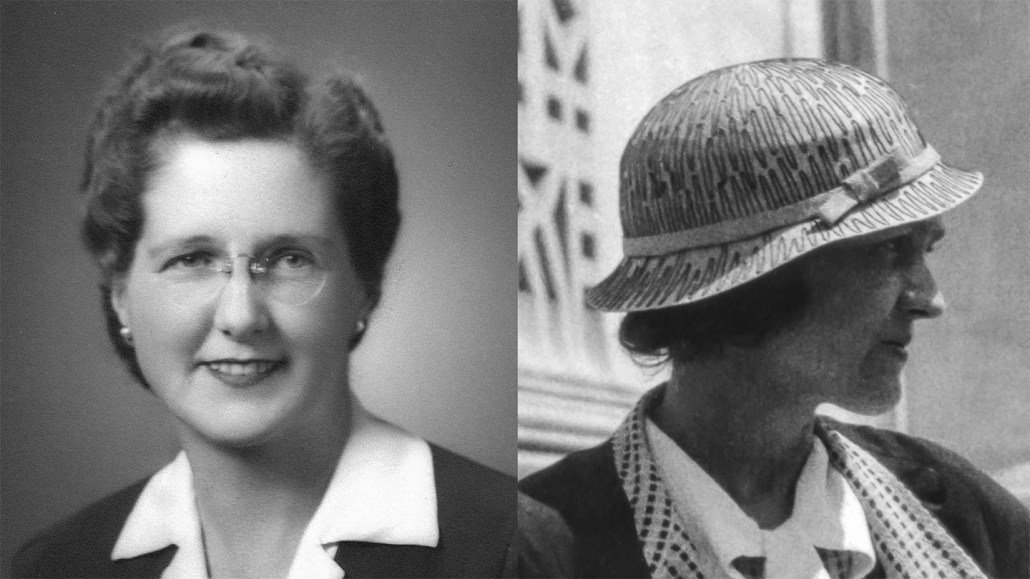
Physicists Laura Chalk (left) and Jane Dewey (right) performed some of the first experimental tests of quantum mechanics. Women’s contributions to the field have often gone unrecognized.
From left: Marilyn MacGregor; Samuel Goudsmit, courtesy AIP Emilio Segrè Visual Archives, Goudsmit Collection
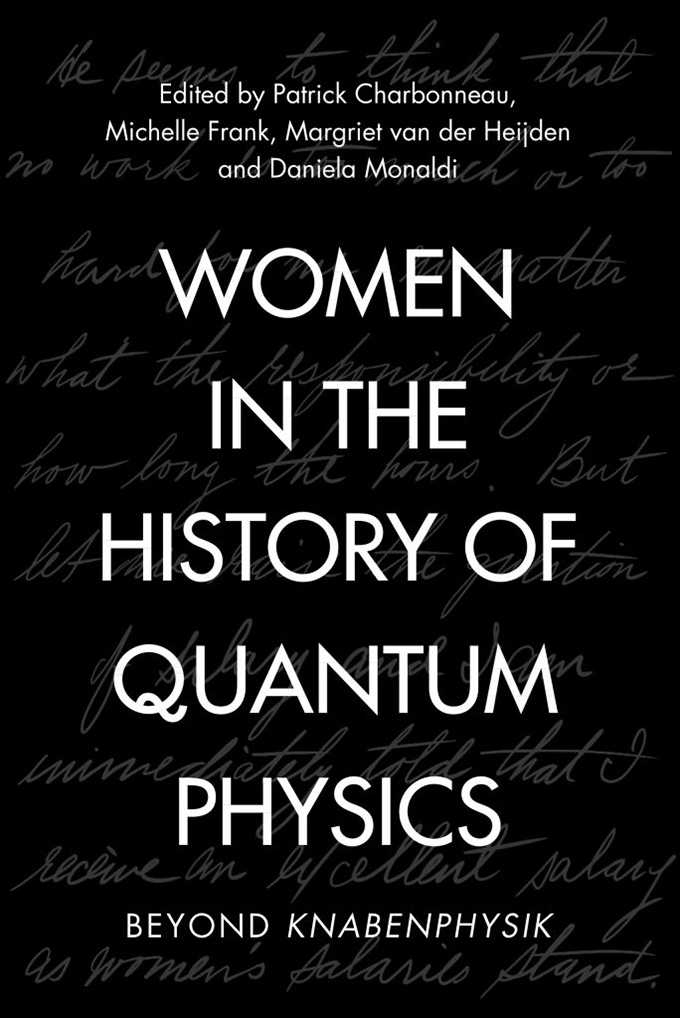
Women in the History of Quantum Physics
Edited by Patrick Charbonneau, Michelle Frank, Margriet van der Heijden and Daniela Monaldi
Cambridge Univ., $49.99
In the 1920s, when quantum mechanics was young, physicists Jane Dewey and Laura Chalk performed some of the first experimental tests of the theory, based on a phenomenon called the Stark effect. Later, famed quantum physicist Werner Heisenberg gushed over the beauty of a Stark effect measurement by a male colleague, Canadian physicist John Stuart Foster. In doing so, Heisenberg neglected the contributions of both women.
That obscuring of women’s contributions was common in the history of quantum mechanics, the theory that describes the physics of atoms and other small-scale phenomena. As scientists mark 100 years since the development of the theory’s foundations, a new book, Women in the History of Quantum Physics, provides a crucial accounting of the lives of those unsung trailblazers. With nuance and care, the book delves into the oft-forgotten stories of 16 female quantum physicists, each one thoroughly researched by a different author or authors.
In its early years, quantum mechanics was known as Knabenphysik, German for “boys’ physics,” highlighting the youth of many of the physicists involved — and simultaneously assuming their gender. But women were working in the field all along. For instance, Dewey’s measurements of the Stark effect — in which the wavelengths of light an atom absorbs and emits are altered by an external electric field — paralleled those of Foster. Each measured the Stark effect in helium. And Chalk, then Foster’s Ph.D. student, studied the Stark effect in hydrogen. But while Foster went on to a lengthy career as an esteemed physicist, Chalk and Dewey eventually left academic research.
Chalk’s and Dewey’s stories exemplify some of the themes prominent throughout the book. Women’s contributions were often attributed to their supervisors or otherwise erased. And women were cut out of the old boys’ clubs through which male physicists championed one another’s work.
Even when women found supportive mentors, discrimination was so rampant that their careers were often impeded or cut short. Dewey struggled to secure a permanent position in academic research. When a prominent physicist-mentor went on a quest to find her a position, the only colleague who expressed interest reported that his colleagues refused to have a woman on staff. She eventually found a position at Bryn Mawr College in Pennsylvania, but even there, at a women’s school, she was replaced by a male physicist after taking a leave of absence for health reasons.
Chalk, meanwhile, was turned down for a scholarship based on a false rumor that she was engaged to be married. At the time, many wedded women were expected to give up their jobs, a norm that ended the careers of multiple women profiled in the book. When Chalk did marry, she transitioned to a part-time role as a professor at McGill University in Montreal, where she worked alongside her physicist-husband. But she was eventually laid off due to anti-nepotism policies, which prohibited spouses from working in the same department — another stumbling block for innumerable women scientists.
What’s more, Dewey often was not referred to by her own name, but rather by the name of a man associated with her. She was called Mrs. Clark — her husband’s name — despite her preference for her original surname in scientific publications. Or even worse, “Magie’s Folly,” after William Francis Magie, a physicist who had supported Dewey’s career.
Women are still woefully underrepresented in quantum physics. Conventional narratives of the field’s history, which champion mostly male “geniuses,” may have something to do with it, the book’s editors suggest.
To combat this notion of a lone genius, the book intentionally skips over legendary women scientists, such as Marie Curie. Celebrating such towering figures, the editors write, may paradoxically reinforce this harmful trope that keeps women out of the field.
Instead, the book highlights women who have remained in the shadows. These include American physicist Katharine Way, creator of a crucial database of atomic and nuclear data; Carolyn Parker, a Black American physicist who worked in military research and at Fisk University in Nashville during the oppressive Jim Crow era; Maria Lluïsa Canut, a prolific X-ray crystallographer who worked in Spain during the Francoist dictatorship; and Ana María Cetto, a modern quantum physicist from Mexico who made numerous contributions to the foundations of quantum mechanics and who is one of the organizers of 2025’s International Year of Quantum Science and Technology, a celebration of the 100th anniversary.
The choice to represent previously unsung women highlights the fact that it’s not necessary to be an exceptional genius to make contributions to quantum research — a statement that goes for men and women alike. Many of the women were regular people with a drive to investigate the wonders of physics even in challenging circumstances.
Scientific concepts in the book are probably most suited to an audience with a background in physics. Equations pepper the text, and important concepts, such as the Bohr model of the atom, are often discussed without explanation. Still, the compelling life stories of the women can be understood by anyone.
Buy Women in the History of Quantum Physics from Bookshop.org. Science News is a Bookshop.org affiliate and will earn a commission on purchases made from links in this article.
